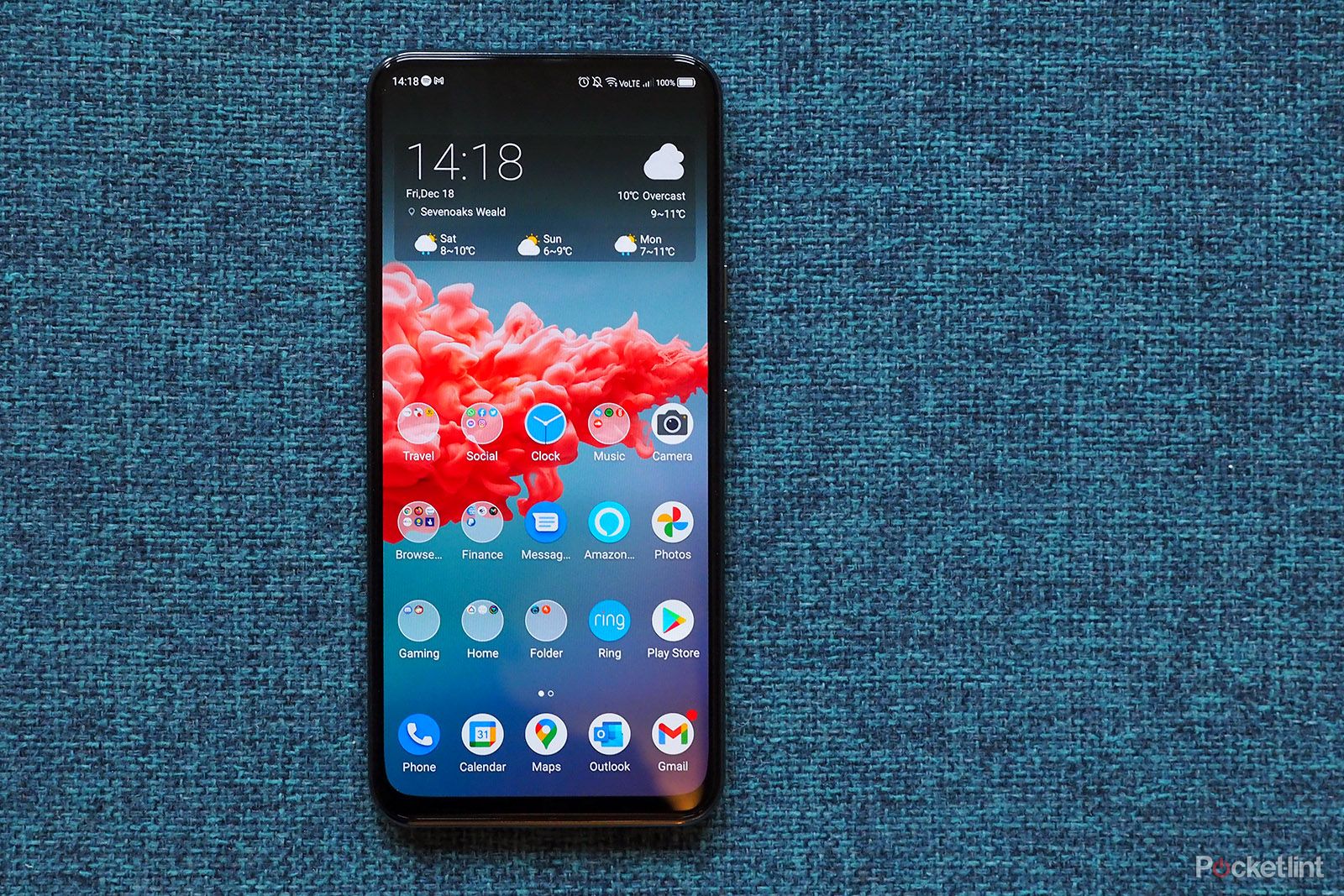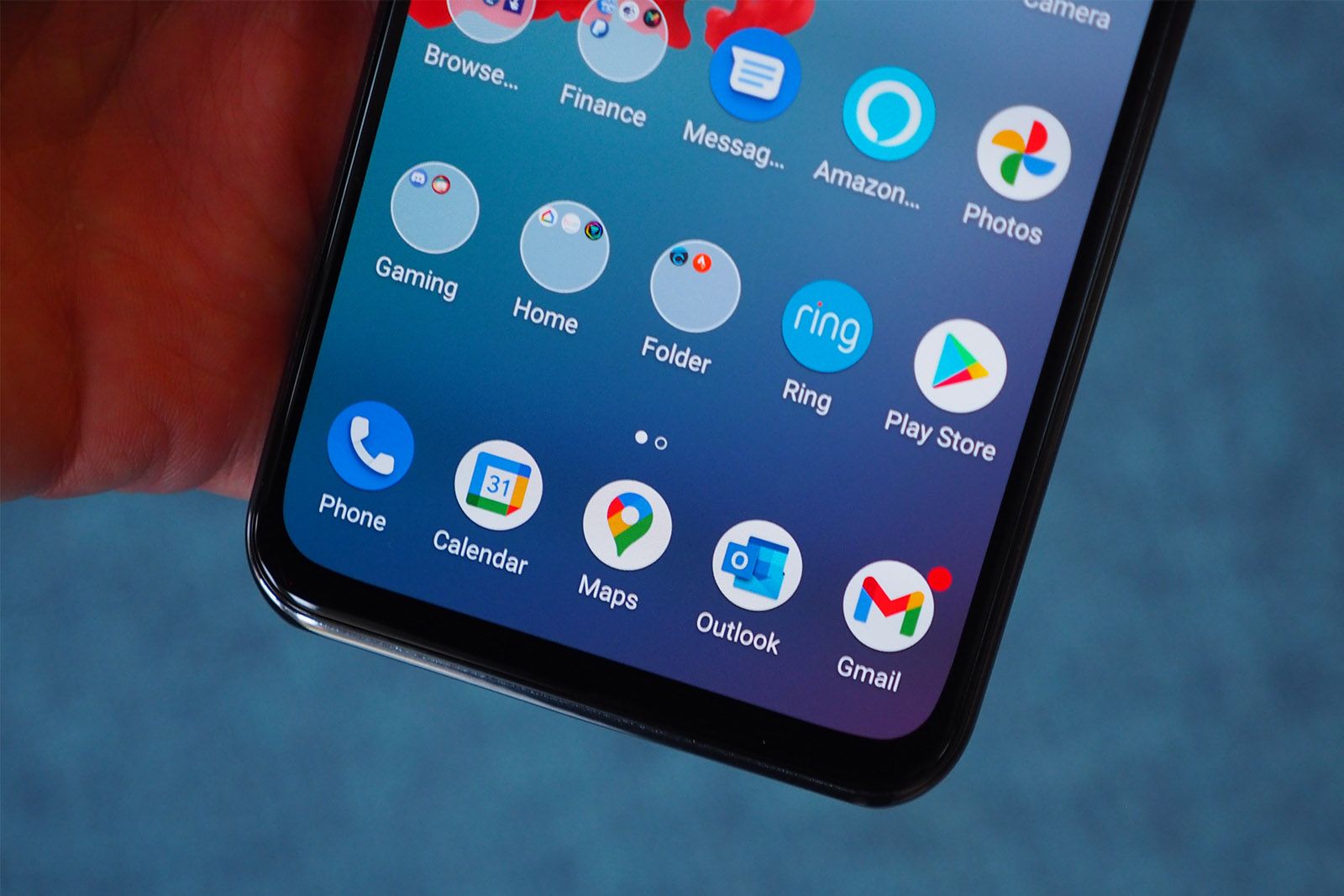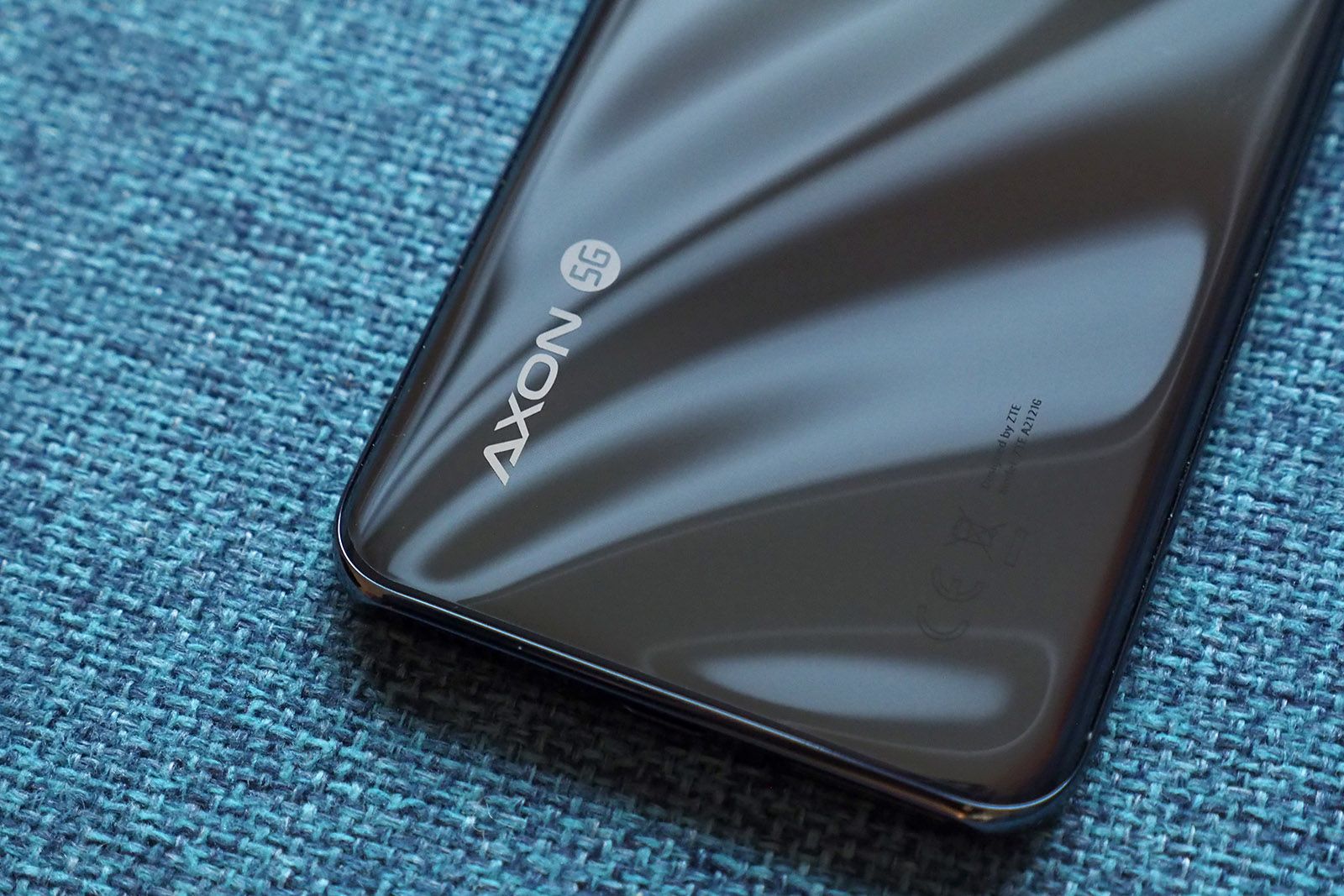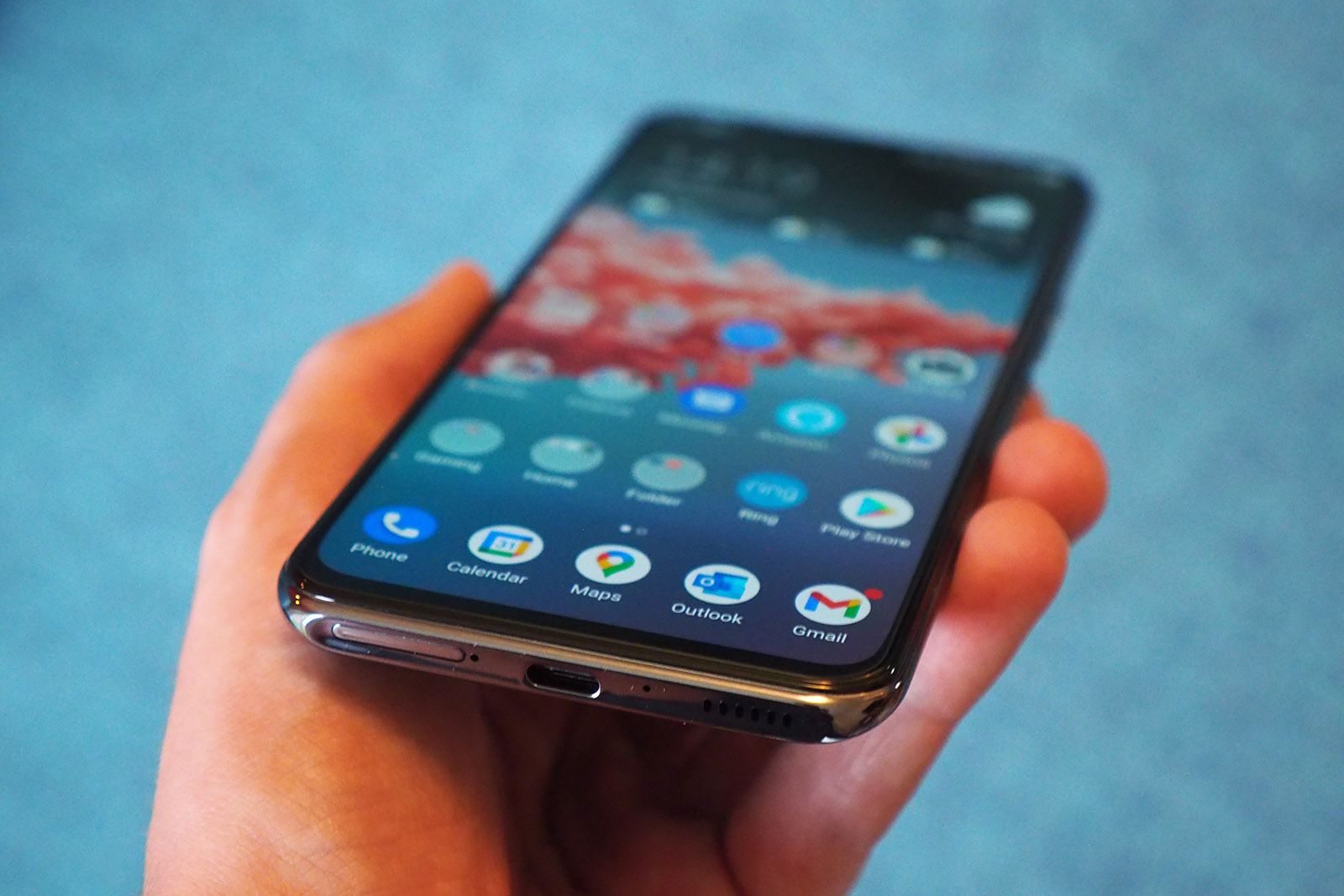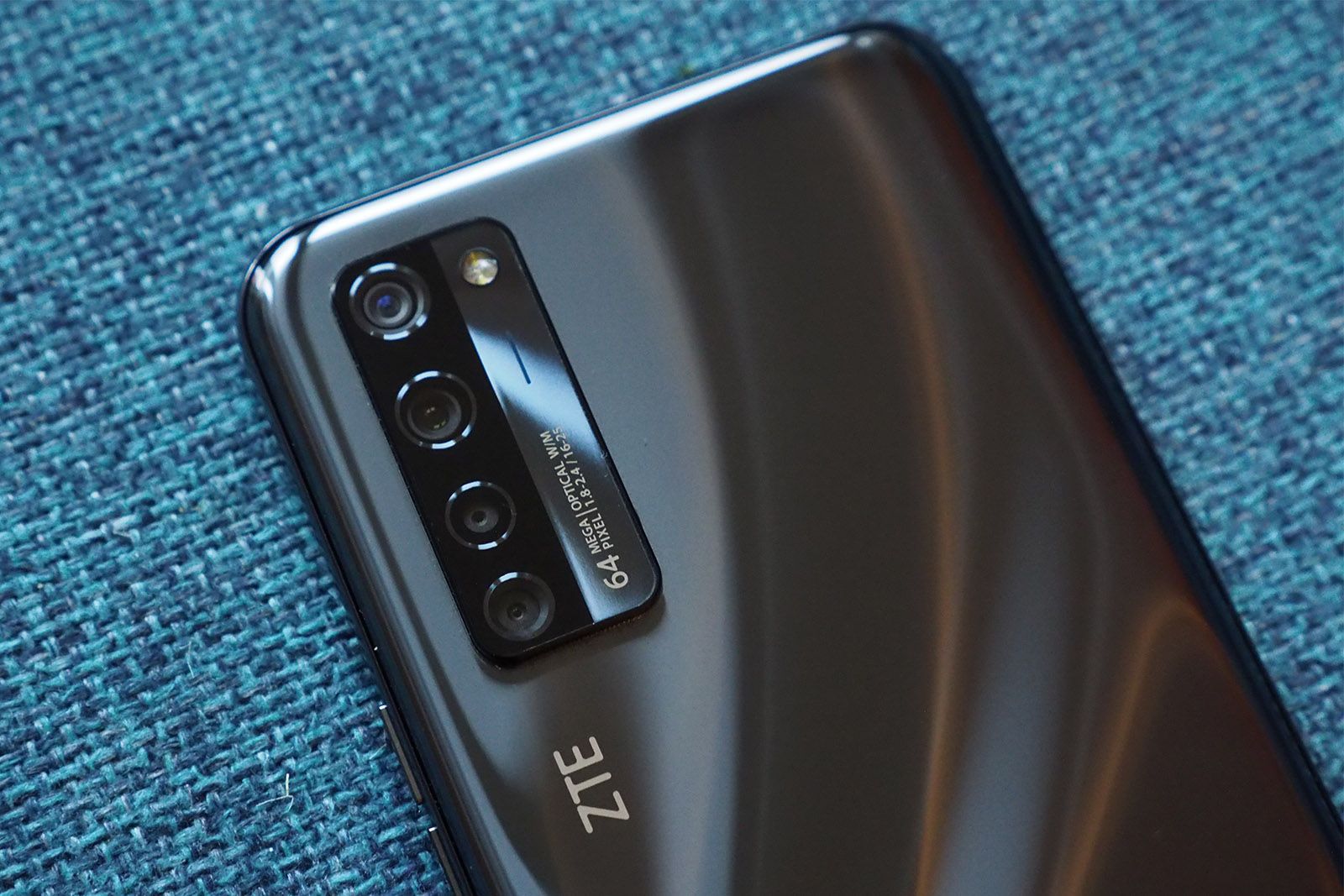Phone-makers have been getting creative when it comes to selfie cameras. We've had the notch, the punch-hole, the pop-up. Now it's the turn of the under-display camera, with the ZTE Axon 20 5G the first phone to launch to market with such a design (despite Oppo showing off the technology first).
"ZTE?" we hear you say. Yep, the tech giant has been floating around in the peripheries in recent years, launching some phones - but they've rarely been available to easily purchase outside of its native China. The Axon 20 5G, therefore, represents not only a first from a technological point of view thanks to that camera, but a renewed push for the company to appeal to a wider audience.
Our quick take
The ZTE Axon 20 5G shows that under-screen cameras will be the future. But it also shows that details matter - and the selfie camera here ought to be better quality to show off the premier point of this phone's very existence. The rear cameras, too, fail to hit the mark overall.
Elsewhere we think the design doesn't highlight the hidden camera appeal quite enough; a curved screen with almost invisible bezel would push that point to the fore even more than this flat screen and dark bezel surround.
As a day-to-day phone, however, we've found ZTE's software to be humble to Android in its approach, meaning it doesn't outwardly busy things like some competitors like to do. Its main issue, however, is the overzealous autobrightness which descends into darkness in all conditions unlike any other phone we've used this year.
It might be an outlier, as a little-known brand in the West, but the ZTE Axon 20 5G shows its worth, while delivering a long-lasting and ample performance in a fairly affordable package.

ZTE Axon 20 5G - 4.0 / 5
| FOR | AGAINST |
|---|---|
|
|
Design & Display
-
6.92-inch OLED 'True Full' display
- 1080 x 2460 resolution
- Under-display camera
- 90Hz refresh rate
- Dimensions: 172 x 78 x 8mm / Weight: 198g
- Glass front & rear, aluminium frame
- Finishes: Black, Gold, Blue, Purple
- Under-display fingerprint scanner
On the face of it the ZTE Axon 20 5G is one of the more exciting phones to launch in 2020. The very idea of an under-display camera has been talk of the town for some time now, so it wasn't expected that a lesser-known brand in the West would be the one to lead the charge.
Thing is, the Axon 20 5G isn't really a flagship phone. It's got a middling spec overall and a design that, in some respects, doesn't really benefit the presence of the under-display camera to its fullest extent.
Take the flat screen's side bezel, for example. Now, we're not saying it's mega-bezel by any means, but when curved-screen devices help to hide the apparent presence of the black border from line of sight it makes the screen look more full.
The Axon 20 5G might well have its selfie camera hidden under the panel, but it's the entire screen's bezel that gives the screen a boxed-in and 'framed' look - so it has a lower screen-to-body ratio compared to many devices that carry a notch of punch-hole camera. That takes away from the under-screen camera's potential somewhat.
Nonetheless, in the dark of winter in the UK (where we're sat reviewing this device) you would initially think there's no camera present under that screen at all. It's convincingly hidden away, which is something of a revelation. Closer inspection, however, shows that you can see the lens beneath - if any light catches the screen, for example, so brighter days it may appear less accomplished.
Furthermore, while images do successfully overlay where the selfie camera lives, they are partially disrupted, almost as if transformed into some 16-bit image of old (scroll through the gallery above to see close-ups). The resolution is lesser in the oblong area surrounding the camera. You'll need to look fairly closely to care about it, though, but open a full-screen game and you'll see a criss-cross effect over that small camera area.
Given phone design, however, most apps and user interfaces don't utilise the top centre section of a screen (or fullest side section, if in landscape orientation). Thus much of the time this camera area will be blacked out anyway and you can more or less forget that it's even there. Especially as here it's tricky to see without eyeballing it up really close.
So while there are improvements that can happen in future iterations, as a first attempt the Axon 20 5G's hidden under-screen camera is convincing, with the highlighted caveats above being part and parcel of such an implementation.
Otherwise the Axon 20 5G's design is generally inoffensive. It's easy to become blasé about phone design when there's such a normal format these days. A chunky rear camera unit with excessive numbers of lenses? Check. A glass rear that's almost magnetic to fingerprint smears? Check. No 3.5mm headphone jack, a single base speaker, a smattering of branding including (unnecessarily) the product name? Check, check, check.
From the right angle, however, the Axon 20's finish has this almost rippling-like way of catching the light, as you can see in our photos. It rarely looks as much like this to the eyes, but it's a cool effect nonetheless.
Performance
- Qualcomm Snapdragon 765G processor, 8GB RAM
- Android 10 operating system, MiFavor 10.5 re-skin
- 4,220mAh battery capacity, 30W fast-charge
- Liquid Cooling with carbon nanofiber
- 128GB storage, microSD expansion
- 5G connectivity
As we said above, the Axon 20 5G isn't aiming to topple flagships with best-in-class internals. This phone's approach is to bring new technology to the mid-range, competing with other models that utilise the Qualcomm Snapdragon 765 platform.
In reality, however, this step-down Qualcomm platform is a great success. It caters for 5G as and when you're in a network area (the Axon 20 has specific controls to disable this if you prefer, for the sake of battery savings). It's more than capable of handling a plethora of tasks, including gaming to a relatively high level - we've had zero problems playing South Park: Phone Destroyer.
Indeed, the use of the 700-series platform is something many phone-makers are opting for, from LG with the Velvet to Vivo with the X51. All of which have proven to put in decent performance with solid battery innings. The ZTE follows a similar suit, capable across the board and long-lasting too. The 4,220mAh battery is capacious enough to easily crunch through a day - we've been using about 50 per cent over a 14 hour period, so it's close to a two-dayer.
That said, ZTE's MiFavor user interface (UI), which is built over the top of Google's Android 10 operating system, doesn't half go excessive when it comes to trying to save battery. The autobrightness is obsessed with seemingly trying to make you think you've gone blind, dimming the screen levels excessively in any conditions - we've been frequently frustrated with manually adjusting it time and again. The screen also suffers from 'black crush' at these lower intensity levels.
The software isn't otherwise disruptive like on some competitors' systems though. MiFavor has swipe controls which are a little finicky, but help to give the screen more real-estate with the absence of Android soft-keys taking up the bottom row. There's no duplication of app stores like you'd find in a Xiaomi phone, for example, as ZTE is Google Play Store only. There's no ads that try and promote other apps when you're downloading an update. There's generally little fuss at all, with a mostly Android-like experience.
Sign-in benefits from that under-screen selfie camera, too, should you wish to activate face unlock, or there's an adept under-display fingerprint scanner too. It's a reasonably fluid experience, one that's massively let down by the overzealous autobrightness adjustment.
Cameras
-
Rear 'quad camera' setup:
- Main: 64-megapixel, f/1.8 aperture, 1/1.72in sensor size
- Wide (120 degrees): 8MP, f/2.2
- Macro: 2MP, f/2.4
- Depth: 2MP, f/2.4
-
Selfie under-screen camera:
- 32-megapixel, f/2.0 aperture
We've covered the selfie camera in more detail up top, but no doubt you'll be wondering just what the quality is like given that it can "see" through a display.
The answer: not that great. This 32-megapixel optic doesn't use multi-pixel processing to obtain improved quality, as such there's quite a lot of grain even in daylight, particularly in shadow areas. The images are far larger than you'll need too, while colour consistency seems to vary shot-to-shot - with a greener balance sometimes rearing its head.
Pop it into Portrait mode, however, and the camera does scale things down (to 5-megapixels, for whatever reason), adding the over-soft background blur and, well, making everything just look soft and blurry.
So while ZTE is first to getting a selfie camera under a display, its results aren't a revelation.
What about the main camera unit to the rear? This is a bit of a mixed bag. There's a trend in 2020 to lump together a bunch of cameras for no real reason: here there's a 2MP depth sensor that's not needed; a 2MP macro camera that's low resolution and can't autofocus and is hard to use; and an 8MP wide-angle camera that's of sub-par quality compared to what else is on the market.
It's the main 64-megapixel sensor that steps in to save things somewhat. Keep your attention on this one and there's some reasonably good results, because it does use four-in-one pixel processing to output 16MP shots as standard. There's still some grain and the fidelity isn't class-leading, but with a steady hand you'll be able to get shots with enough detail and balance. Even the night mode works well in low-light conditions.
The ZTE isn't the only culprit to oversell its cameras, it seems to be the flavour of 2020. Stick with the main rear optic and you'll be plenty happy, it delivers what's needed at this price point. The addition of depth, macro and wide-angle cameras add disappointment though. And that selfie camera ought to be more adept rather than high-resolution, because the selfie camera is the premier point of this phone's existence.
To recap
It might be an outlier, as a little-known brand in the West, but this ZTE is a nod to the future, showing off a convincing under-screen camera, while delivering a long-lasting and ample performance in a fairly affordable package. It's in the details - autobrightness adjustment, frame-like screen bezel, and so-so cameras overall - where it sometimes misses the mark.

